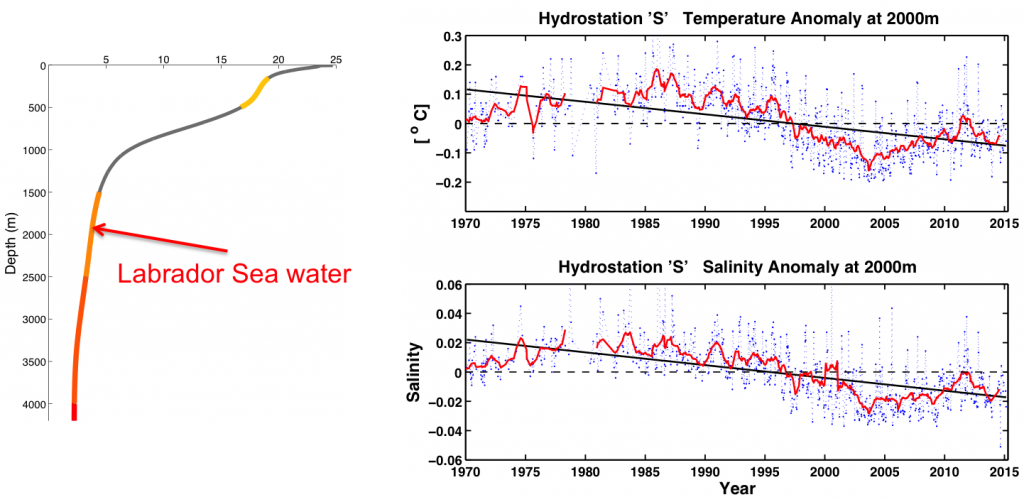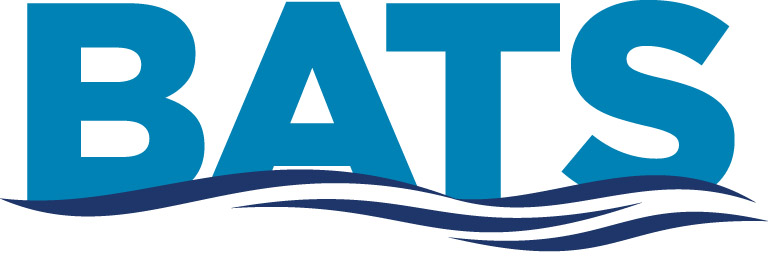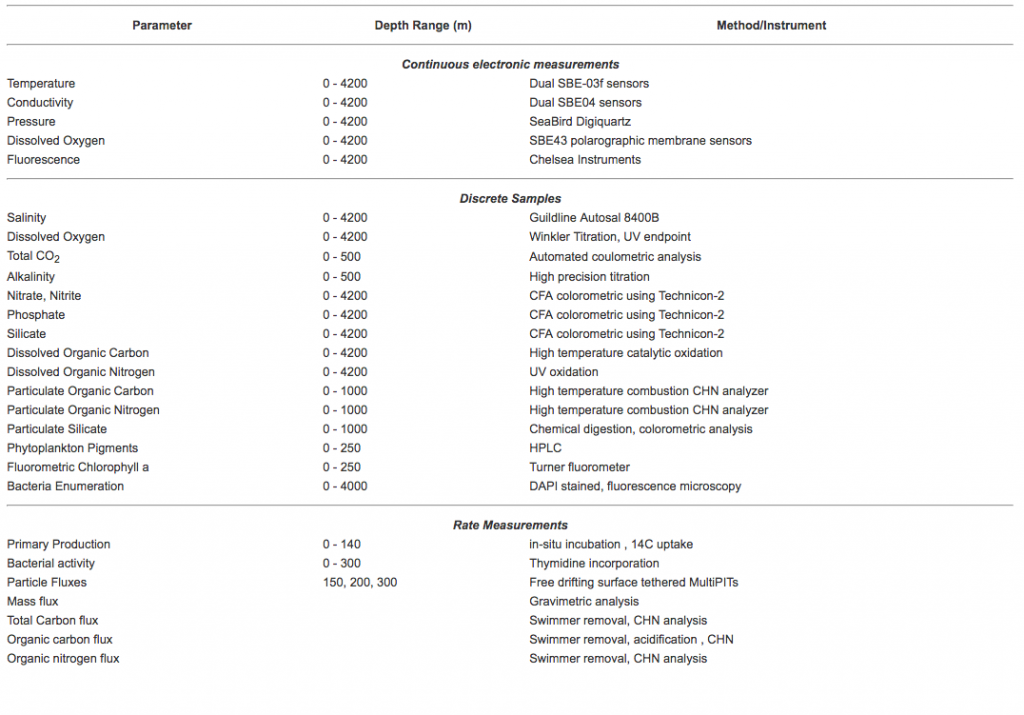Long-term time series, like BATS, are invaluable platforms for investigating temporal and spatial scales of ocean biogeochemical variability and relationships with the global carbon cycle. Moreover, they provide comprehensive datasets used to assess the behavior of biogeochemical and ecosystem models. The research goals of BATS has been, and continues to be, improving our understanding of the “time-varying” components of the ocean carbon cycle, related biogenic elements of interest (e.g., nitrogen, phosphorus, silica), and identifying the relevant physical, chemical and ecosystem properties responsible for this variability.
The objectives of BATS are to:
1) document the temporal variability in nutrient cycles and biological communities;
2) quantify the role of ocean-atmosphere coupling and climate forcing on air-sea exchange of CO2, and carbon export to the ocean interior;
3) Study the role of physical forcing (e.g., surface fluxes of heat, freshwater and momentum) on planktonic community structure and function, including new and export productivity;
4) Study the role of climate-induced variability in surface fluxes on planktonic community structure and function; and
5) provide a testbed for the introduction and validation of new oceanographic tools and technologies.
Core Measurements at BATS
Sample Data Products

Data from BATS and Hydrostation S represent the longest ocean acidification signal in the world, clearly demonstrating a decrease in ocean pH in the Sargasso Sea

Hydrostation S data demonstrate oceanic cooling and freshening associated with changes in the Arctic Ocean sea-ice melt




